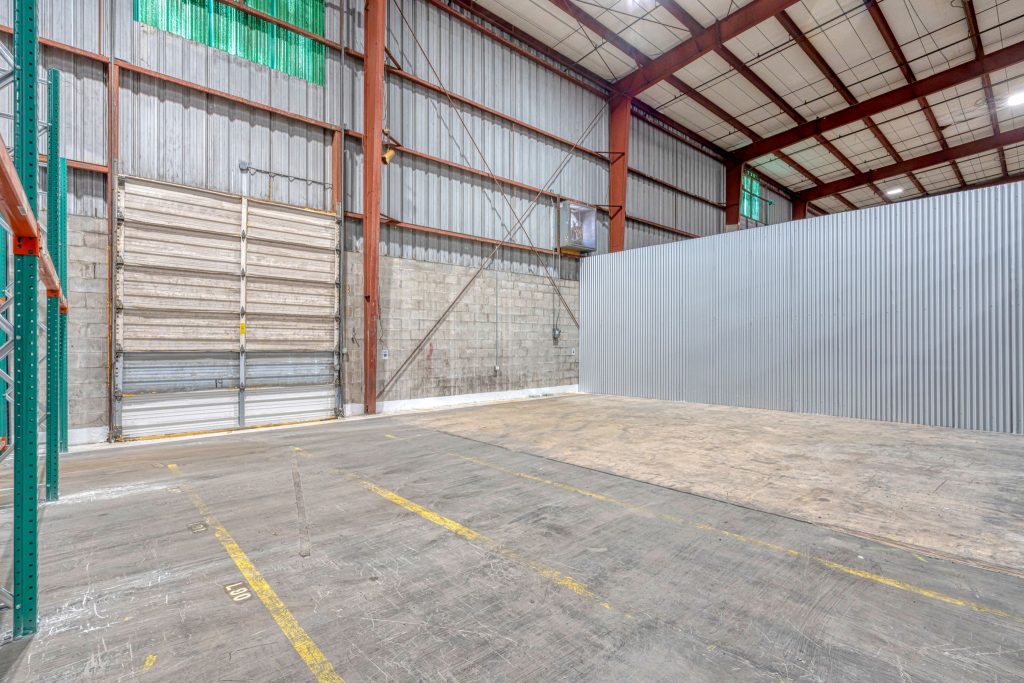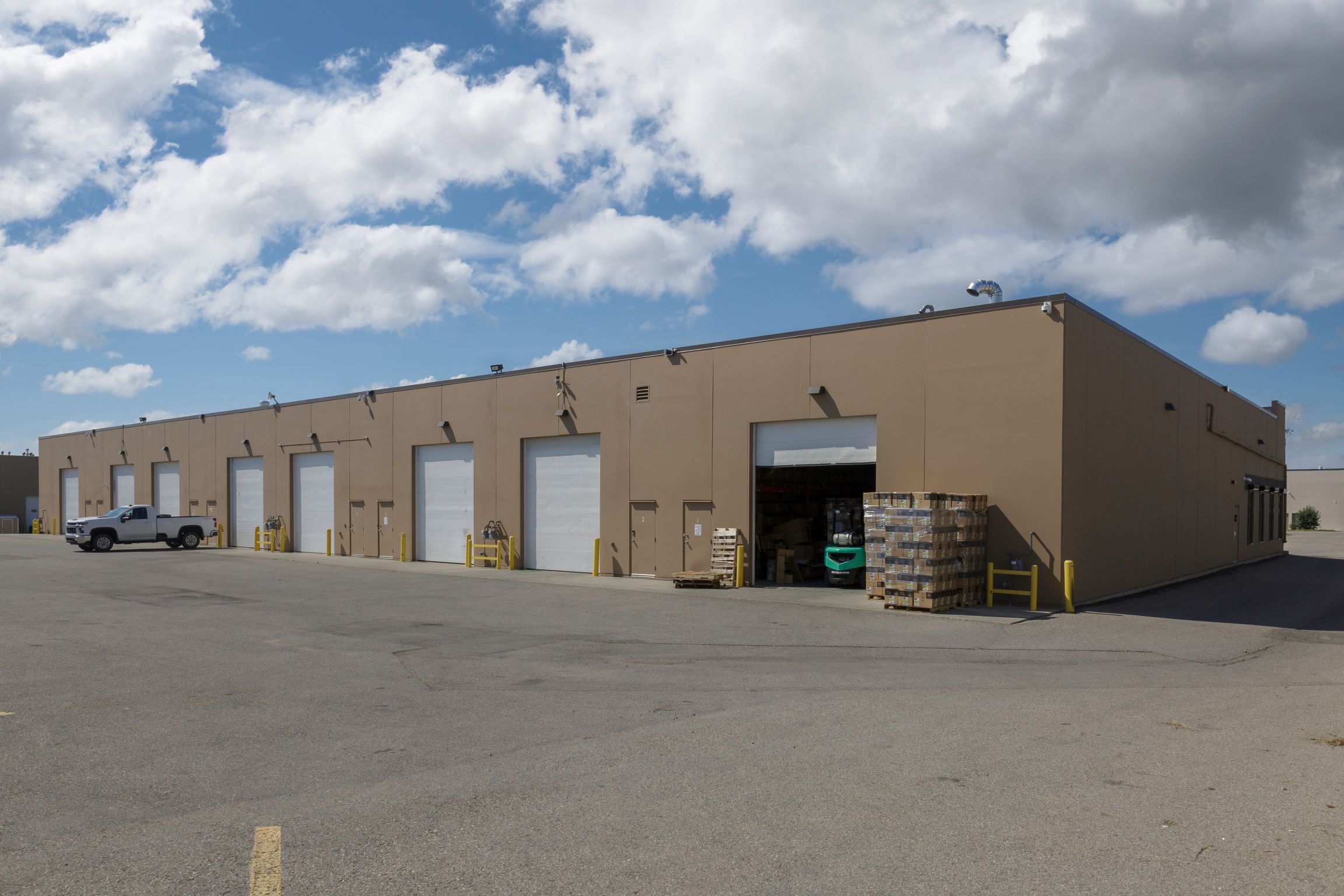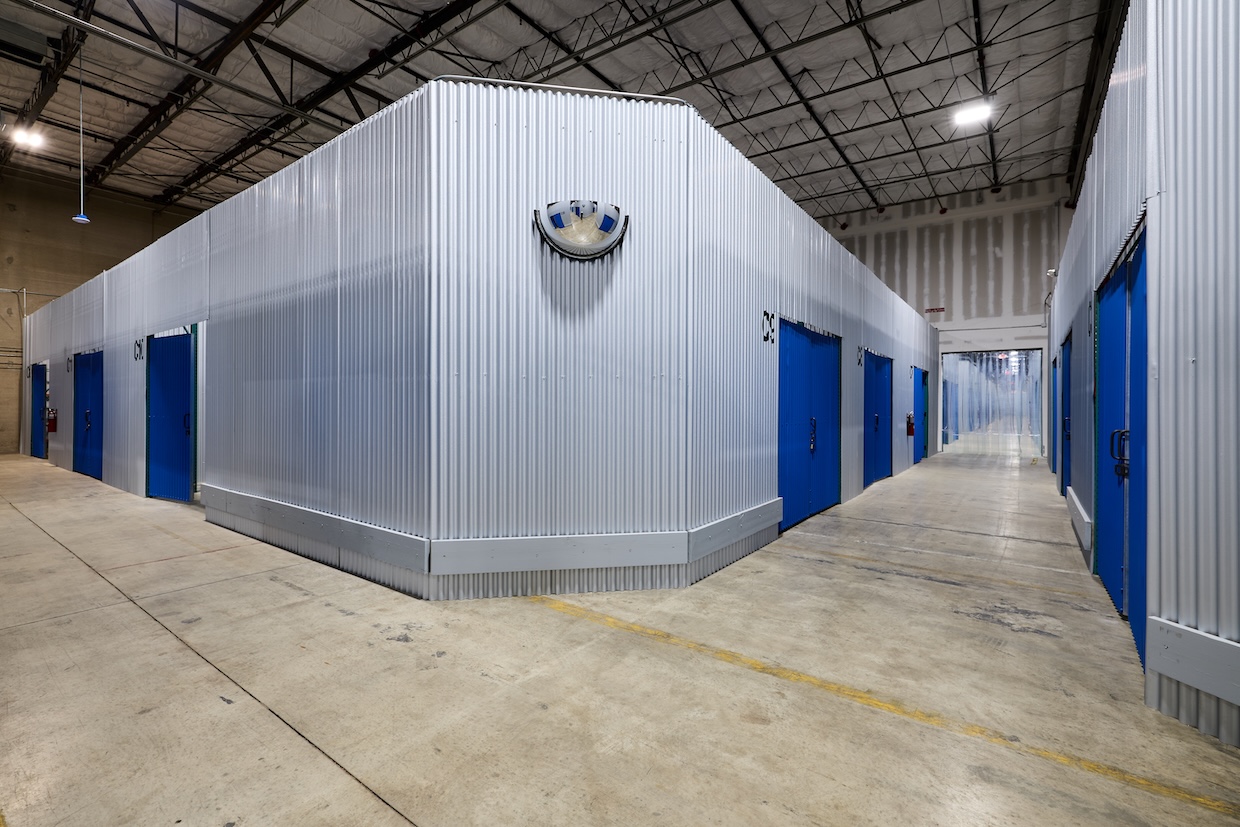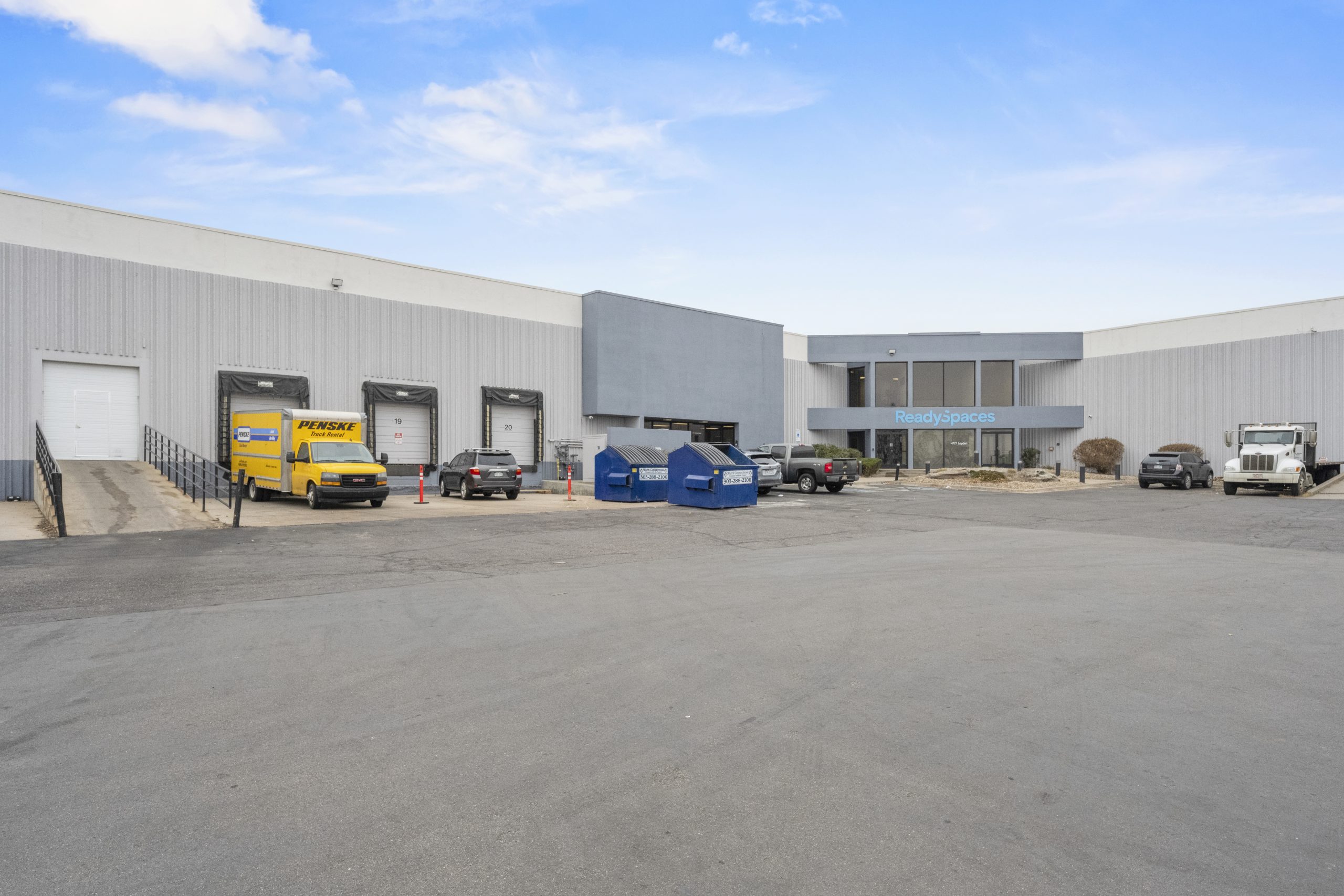Tampa Warehouse Market Report 2025: Where 170 Daily Arrivals Create Florida’s Tightest Small Bay Market
Tampa’s warehouse market is Florida’s quiet industrial powerhouse. While Miami grabs headlines and Orlando builds theme parks, Tampa has quietly delivered over 10 million square feet of annual warehouse leasing for five consecutive years, a streak unmatched in the Southeast outside of Atlanta. With 170 people moving to the Tampa Bay area daily and small bay warehouse vacancy at a critically tight 3.2%, this market combines population growth, pharmaceutical manufacturing spillover from North Carolina’s Research Triangle, and logistics infrastructure anchored by Coca-Cola’s 1.2 million SF facility. The market isn’t just strong; it’s structurally undersupplied in exactly the segments small businesses need most.

FACT BOX: Tampa Warehouse Market Snapshot
- Overall Vacancy Rate: 6.3-8.5% (Q2-Q3 2025)
- Average Rental Rate: $9.06-12.50/SF NNN (record highs)
- YoY Rent Change: +6.5% (strongest growth in Florida)
- Annual Absorption: 10+ million SF (5-year streak)
- Small Bay Vacancy (<50K SF): 3.2% (critically tight)
- Under Construction: 7.2 million SF (75% pre-leased)
- Population Growth: 170 daily arrivals (62,000+ annually)
- Pre-Leasing Rate: 75% (highest among major FL markets)
Current Market Conditions: Five Years of Uninterrupted Strength
Vacancy and Availability: Healthy Tension Between Supply and Demand
Tampa warehouse vacancy rates ranged from 6.3% to 8.5% through Q3 2025, depending on the submarket and property type being measured. This represents a healthy industrial market—tight enough to support rent growth but loose enough to accommodate tenant expansion. Unlike markets experiencing oversupply corrections (Denver, Phoenix), Tampa never overbuilt. Developers maintained discipline through the 2021-2023 construction boom, focusing on pre-leased build-to-suit projects rather than speculative development.
The result: Tampa has delivered 10+ million square feet of warehouse leasing annually for five consecutive years (2020-2024), a remarkable consistency that reflects both steady demand and controlled supply. The East Tampa and Brandon submarkets lead absorption, driven by e-commerce fulfillment, regional distribution, and pharmaceutical cold chain logistics.
Rental Rates: Record Highs With Room to Run
Tampa warehouse rental rates reached record levels in Q3 2025, averaging $9.06 to $12.50 per square foot NNN, depending on property class, size, and submarket. Year-over-year rent growth of 6.5% leads all major Florida industrial markets, outpacing Orlando (+5-6%), Jacksonville (+4%), and even Miami (+5.5%).
What’s driving continued rent appreciation despite elevated vacancy in other Sun Belt markets? Supply constraint. Tampa’s 75% pre-leasing rate on new construction means virtually no speculative supply hits the market, keeping landlords’ pricing power intact. Class A properties with modern clear heights (32’+ feet), ESFR sprinkler systems, and strong truck courts command premium rents of $11-13/SF, while older Class B warehouse space (20-26′ clear height, limited trailer parking) rents for $7-9/SF.
Small bay warehouse properties (under 50,000 SF) face the most acute supply shortage, with vacancy at just 3.2% and minimal new construction planned. Landlords of well-located small bay facilities are effectively picking tenants and offering virtually no concessions.
Leasing Activity: Pharmaceutical and E-Commerce Leading Absorption
Tampa’s warehouse leasing activity is driven by two primary demand factors: pharmaceutical manufacturing and e-commerce fulfillment. The pharmaceutical sector’s expansion in Tampa represents partial spillover from North Carolina’s Research Triangle, where land costs and competitive intensity have pushed some manufacturers to seek alternative locations with similar East Coast logistics advantages.
Cold chain warehouse facilities—essential for pharmaceutical distribution—have been particularly active, with several leases of 100,000-200,000 SF signed in H1 2025 in the Brandon and South Tampa submarkets. These temperature-controlled facilities command rents 25-40% above standard warehouse rates due to higher construction costs and specialized infrastructure requirements.
E-commerce and 3PL providers continue to drive absorption in standard warehouse space, with Amazon, Target, and regional e-commerce fulfillment operators all maintaining or expanding their Tampa footprints. The market’s position as a natural distribution point for serving both Florida’s west coast population centers and broader Southeast regional markets makes it attractive for inventory positioning.
Development Pipeline: Discipline and Pre-Leasing Dominate
7.2 Million SF Under Construction, 75% Pre-Leased
Tampa’s current development pipeline of 7.2 million SF under construction is substantial but healthy, representing approximately 6% of the total industrial inventory. Critically, 75% of this space is pre-leased or build-to-suit projects, the highest pre-leasing rate among major Florida industrial markets. This disciplined development approach has prevented the speculative oversupply situations plaguing other Sun Belt markets.
Major under-construction projects include:
- Coca-Cola Consolidated Distribution Facility – 1.2 million SF in East Tampa (fully pre-leased)
- Multiple Build-to-Suit Pharmaceutical Facilities – Aggregate 800,000 SF (Brandon submarket)
- E-Commerce Last-Mile Centers – 1.5 million SF across multiple locations (85% pre-leased)
The concentration of pre-leased construction means future vacancy pressure is minimal. Unlike markets with millions of square feet of speculative supply that deliver vacant space, Tampa’s pipeline will be substantially occupied upon delivery.
Small Bay Construction: The Missing Piece
Tampa warehouse development has focused almost exclusively on large-format facilities (100,000+ SF), leaving small bay properties (10,000-50,000 SF) structurally undersupplied. As of Q3 2025, only one small bay warehouse project is under construction—a 120,000 SF multi-tenant facility in Brandon that will provide 8-10 small bay suites upon completion in Q4 2025.
This supply gap creates a significant challenge for small businesses, light manufacturers, and service operations seeking warehouse space under 20,000 SF. Vacancy for these properties sits at 3.2%, and landlords have minimal incentive to offer concessions or flexible lease terms. The combination of strong demand (170 daily population arrivals) and virtually no new supply positions small bay warehouse properties for continued rent appreciation of 8-12% annually through 2026.
Small Bay Warehouse Opportunities: Florida’s Tightest Segment
3.2% Vacancy, No Supply Relief Coming
Tampa’s small bay warehouse market (under 50,000 SF) is Florida’s tightest industrial segment by vacancy rate. At 3.2%, vacancy is functionally zero once you account for properties undergoing tenant improvement work, listings marketed but effectively off-market, and substandard facilities that remain vacant for structural reasons (poor access, deficient infrastructure, environmental concerns).
Well-located small bay properties with functional clear heights (18’+ feet), adequate trailer parking, and reasonable proximity to I-4 or I-75 corridors are essentially fully leased. When vacancies do occur, landlords are typically fielding multiple applications and selecting tenants based on creditworthiness and perceived lease compliance rather than competitive bidding.
Premium Pricing With Limited Concessions
Small bay warehouse tenants in Tampa should expect to pay premium rents with minimal landlord concessions. Typical small bay warehouse rental rates range from $10-15/SF NNN depending on location, age, and functionality. For comparison, large bay warehouse space (100,000+ SF) in the same submarkets rents for $9-12/SF NNN, creating a $2-3/SF small bay premium.
Lease concessions are rare in this segment. Tenants should expect:
- Free Rent: 1-2 months maximum (vs. 3-6 months in large bay)
- TI Allowances: $5-10/SF for space 10,000-20,000 SF (vs. $10-20/SF in large bay)
- Lease Terms: 3-5 years minimum (landlords prefer longer terms)
- Rent Escalations: 3-4% annual increases (non-negotiable)
The few small bay purchase opportunities available in Tampa command prices of $120-180/SF depending on location and condition, with well-located properties under 30,000 SF attracting multiple offers.
Tampa’s Unique Demand Drivers: Beyond E-Commerce
Pharmaceutical Manufacturing Spillover
Tampa’s emergence as a secondary pharmaceutical manufacturing and distribution hub represents one of the market’s most significant structural demand drivers. The pharmaceutical sector’s presence creates demand for specialized cold chain warehouse facilities, high-security storage, and temperature-controlled distribution centers—all of which command premium rents and require minimal tenant turnover due to regulatory compliance requirements.
North Carolina’s Research Triangle has reached capacity constraints, with land costs rising and regulatory permitting timelines extending. Tampa offers similar East Coast logistics advantages (major port, international airport, interstate access) at 30-40% lower facility costs, creating a compelling value proposition for pharmaceutical companies seeking expansion locations.
Coca-Cola’s 1.2 Million SF Ecosystem Effect
Coca-Cola Consolidated’s new 1.2 million SF distribution facility in East Tampa represents the single largest industrial lease in Florida in 2024-2025. Beyond the direct employment (400+ workers), this facility creates an ecosystem of supplier, service provider, and logistics partner businesses seeking nearby warehouse space. Transport companies, packaging suppliers, warehousing and distribution contractors, and maintenance service providers all benefit from proximity to this anchor tenant.
The “ecosystem effect” of large anchor tenants like Coca-Cola typically generates 3-5× the space demand of the anchor facility itself, as supply chain partners cluster nearby. This secondary demand predominantly manifests in small to mid-bay warehouse requirements (5,000-50,000 SF), further tightening the most constrained segment of Tampa’s industrial market.
170 Daily Arrivals: Population Growth Drives Demand
Tampa Bay receives approximately 170 new residents daily (62,000+ annually), one of the highest sustained population growth rates in the United States. This steady influx creates compounding demand for:
- Consumer goods distribution (serving growing retail and service businesses)
- E-commerce last-mile fulfillment (supporting local delivery operations)
- Service business warehouse needs (HVAC, plumbing, electrical contractors)
- Small business storage (as local businesses expand)
Population growth of this magnitude translates to approximately 1.5-2.0 million SF of annual industrial warehouse demand purely from local consumption and service business growth, independent of logistics and distribution demand drivers.
2026 Market Outlook: Continued Strength, Limited Risk
Near-Term Fundamentals (Q4 2025 – Q4 2026)
Tampa’s warehouse market fundamentals remain strong through 2026. The combination of 75% pre-leasing on new construction, steady population growth, and pharmaceutical sector expansion supports continued rent appreciation in the 5-8% range. Vacancy should remain range-bound between 6-9%, representing a healthy equilibrium rather than oversupply concern.
Small bay warehouse properties face the tightest conditions and strongest rent growth potential (8-12% annually). The absence of new small bay construction and continued population-driven demand create structural undersupply that will persist through at least mid-2027.
Risk Factors to Monitor
Insurance Costs: Florida property insurance costs have risen 40-60% since 2020 due to hurricane exposure. These costs get passed through to tenants as CAM charges or NNN expenses, effectively increasing total occupancy costs and potentially dampening tenant demand.
Construction Costs: Building costs in Tampa rose 35-45% from 2020-2023, making new development uneconomical at current rental rates for anything except pre-leased build-to-suit projects. While this supports existing landlord pricing power, it also limits future supply—a double-edged dynamic that creates near-term strength but potential long-term constraints.
Economic Sensitivity: Tampa’s warehouse market is heavily weighted toward consumer-facing distribution (e-commerce, retail supply chain, last-mile delivery). Any significant economic downturn affecting consumer spending would impact absorption more severely than markets with diversified industrial demand.
Strategic Recommendations for Warehouse Tenants
For Businesses Seeking 50,000-200,000 SF:
- Expect healthy competition for quality space
- Budget 6.5-8.5% annual rent growth in lease renewal scenarios
- Consider 7-10 year terms to lock in current economics
- Properties in Brandon and East Tampa submarkets offer best value
For Small Bay Users (<20,000 SF):
- Act immediately—vacancy at 3.2% means minimal options
- Expect $10-15/SF NNN with limited landlord concessions
- Consider secondary submarkets (Plant City, Oldsmar) for better availability
- Purchasing opportunities rare but available for qualified buyers ($140-180/SF)
For Pharmaceutical/Cold Chain Users:
- Tampa’s emerging pharmaceutical cluster creates long-term location value
- Temperature-controlled warehouse rents at $12-18/SF NNN
- Brandon submarket has strongest pharmaceutical concentration
- Consider build-to-suit if requirements exceed 75,000 SF
For Opportunistic Investors:
- Small bay properties (10,000-40,000 SF) offer strongest cash-on-cash returns
- Properties with purchase options in strong submarkets (Brandon, East Tampa)
- Older Class B properties with redevelopment/repositioning potential
- Value-add plays in secondary submarkets with population growth trajectories
The Bottom Line
Tampa’s warehouse market is Florida’s industrial powerhouse by nearly every metric: five consecutive years of 10+ million SF annual absorption, rent growth leading the state at +6.5%, small bay vacancy at 3.2%, and 75% pre-leasing on new construction. The combination of sustained population growth (170 daily arrivals), pharmaceutical manufacturing cluster development, and logistics infrastructure anchored by major corporate facilities creates multiple overlapping demand drivers.
Small bay warehouse tenants face the tightest conditions in Florida. With virtually no new supply planned and steady demand from small business growth, this segment is expected to experience continued rent appreciation of 8-12% annually through 2026.
Where 170 daily arrivals meet disciplined development, Florida’s tightest small bay market emerges.
Data Sources & Market Research
This Tampa warehouse market report synthesizes data from the following authoritative sources:
- Cushman & Wakefield – Tampa Industrial Market Report Q2 2025
- JLL – Tampa Industrial Outlook Q3 2025
- CBRE – Tampa Industrial & Logistics Market Overview Q2 2025
- Colliers – Tampa Bay Industrial Market Analysis Q3 2025
- Avison Young – Florida Industrial Markets Q2 2025
- Newmark – Tampa Warehouse Market Trends Q2 2025


